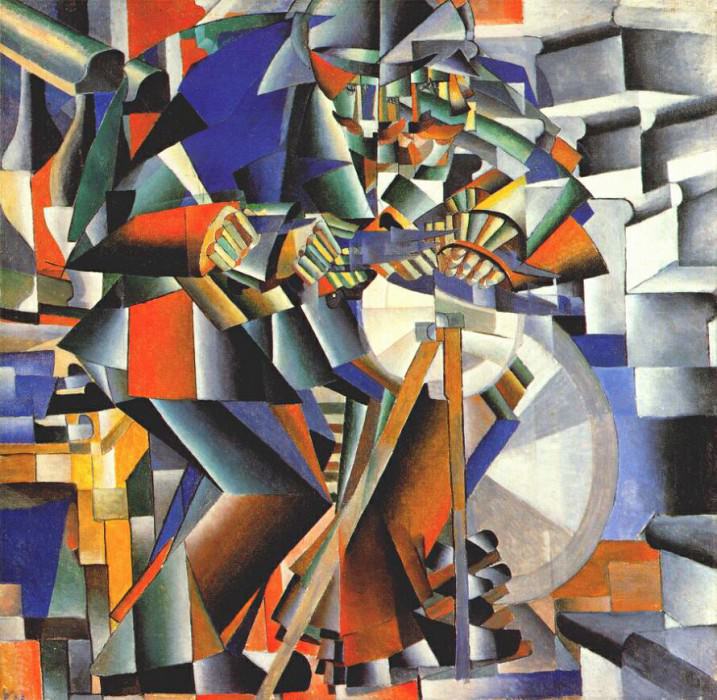malevich the grinder (principle of flickering) 1912-13 Kazimir Malevich (1879-1935)
Kazimir Malevich – malevich the grinder (principle of flickering) 1912-13
Edit attribution
Download full size: 890×870 px (0,2 Mb)
Painter: Kazimir Malevich
This painting has an addition to its title, The Flicker Principle. What is it about? Apparently it’s the fact that in different positions, the word strobe picture shows a foot pushing on the pedal of a sharpening machine. Similarly, the movement of the sharpener’s hands is shown. One of them brings the knife to the machine, the other presses the blade against the sharpening wheel. And if the outline of the shoulder can be guessed, then it is simply impossible to understand where the head of the working man is and what kind of face he has.
Description of Kazimir Malevich’s painting "The Sharper"
This painting has an addition to its title, The Flicker Principle. What is it about? Apparently it’s the fact that in different positions, the word strobe picture shows a foot pushing on the pedal of a sharpening machine. Similarly, the movement of the sharpener’s hands is shown.
One of them brings the knife to the machine, the other presses the blade against the sharpening wheel. And if the outline of the shoulder can be guessed, then it is simply impossible to understand where the head of the working man is and what kind of face he has. Only the thick red mustache is discernible. Apparently, Kazimir Malevich wanted to show the turn of the master’s head.
Critics attribute this painting to a style that combines futurism and cubism, calling it futurocubism. The principle borrowed from Cubism is the repetition, if not calling it a piling up, of homogeneous objects. On the right we see something that looks like stairs. On the left are some rails and bottle necks which, when looked at more closely, suddenly turn into the usual banisters with balusters. Behind the sharpener’s figure I can make out a yellow table. Near the railing is a white vase.
The only things depicted without repetition and ruggedness of lines are the wheel and the sharpening wheel. The artist has only given them some motion with the help of some techniques.
About this kind of art, of course, can be argued for a long time, but it is impossible not to agree with the fact that this picture bears a certain mood, and it is very positive. It’s inspiring, it’s beautiful. It has the main thing that distinguishes a masterpiece - emotion and movement.
In a true creation, there has to be action, compressed into the moment. And this is what Malevich managed to embody in his painting The Sharpener (The Principle of Flickering). Isn’t this how sparks of red-hot metal flicker when a blunt knife is in the hands of a master? Isn’t that how a spinning wheel flashes?
Кому понравилось
Пожалуйста, подождите
На эту операцию может потребоваться несколько секунд.
Информация появится в новом окне,
если открытие новых окон не запрещено в настройках вашего браузера.
You need to login
Для работы с коллекциями – пожалуйста, войдите в аккаунт (open in new window).




















You cannot comment Why?
Perhaps it’s a painting of a man with a guitar in his hand and another man.